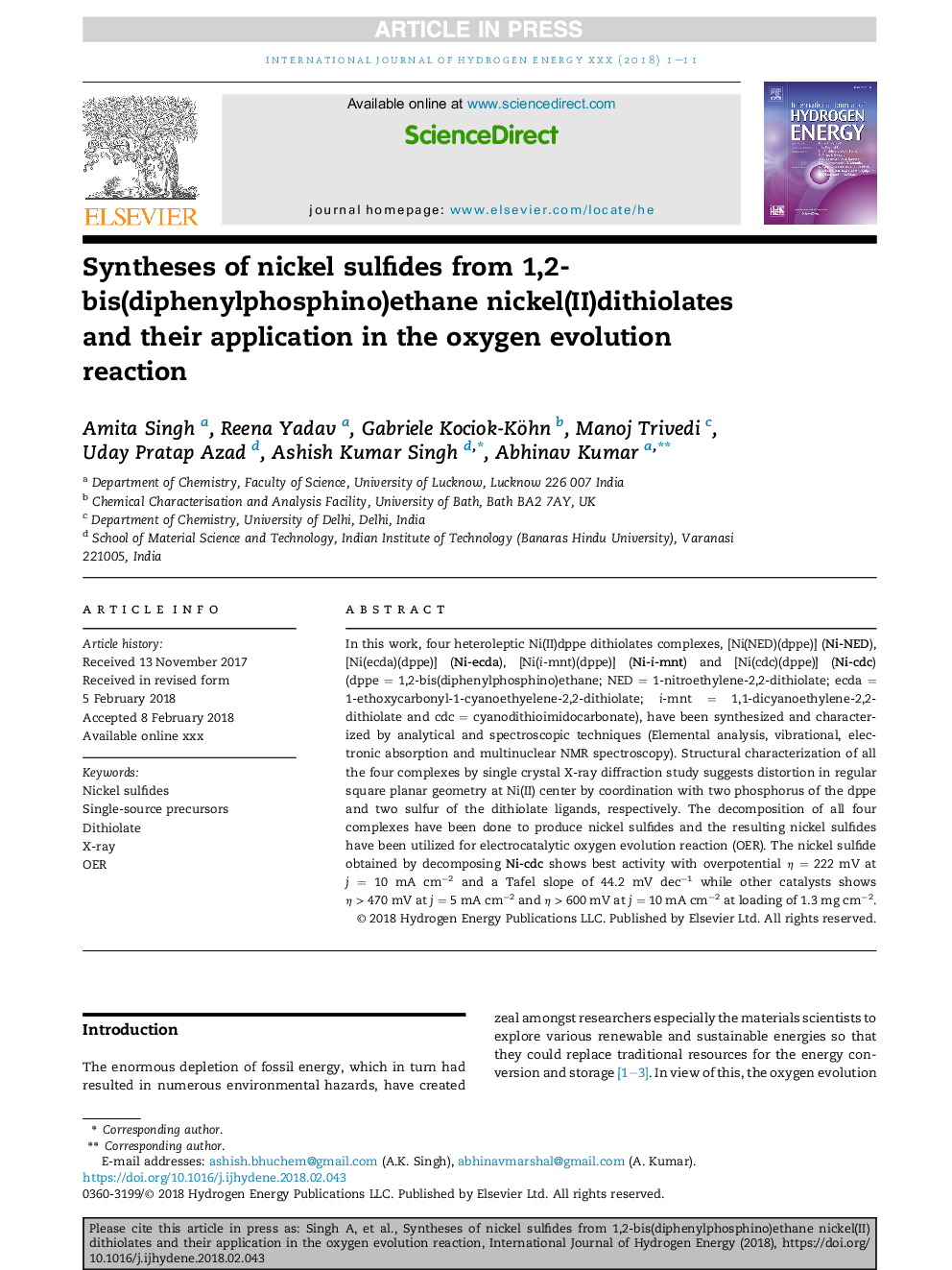| Article ID | Journal | Published Year | Pages | File Type |
|---|---|---|---|---|
| 7706946 | International Journal of Hydrogen Energy | 2018 | 11 Pages |
Abstract
In this work, four heteroleptic Ni(II)dppe dithiolates complexes, [Ni(NED)(dppe)] (Ni-NED), [Ni(ecda)(dppe)] (Ni-ecda), [Ni(i-mnt)(dppe)] (Ni-i-mnt) and [Ni(cdc)(dppe)] (Ni-cdc) (dppe = 1,2-bis(diphenylphosphino)ethane; NED = 1-nitroethylene-2,2-dithiolate; ecda = 1-ethoxycarbonyl-1-cyanoethyelene-2,2-dithiolate; i-mnt = 1,1-dicyanoethylene-2,2-dithiolate and cdc = cyanodithioimidocarbonate), have been synthesized and characterized by analytical and spectroscopic techniques (Elemental analysis, vibrational, electronic absorption and multinuclear NMR spectroscopy). Structural characterization of all the four complexes by single crystal X-ray diffraction study suggests distortion in regular square planar geometry at Ni(II) center by coordination with two phosphorus of the dppe and two sulfur of the dithiolate ligands, respectively. The decomposition of all four complexes have been done to produce nickel sulfides and the resulting nickel sulfides have been utilized for electrocatalytic oxygen evolution reaction (OER). The nickel sulfide obtained by decomposing Ni-cdc shows best activity with overpotential η = 222 mV at j = 10 mA cmâ2 and a Tafel slope of 44.2 mV decâ1 while other catalysts shows η > 470 mV at j = 5 mA cmâ2 and η > 600 mV at j = 10 mA cmâ2 at loading of 1.3 mg cmâ2.
Related Topics
Physical Sciences and Engineering
Chemistry
Electrochemistry
Authors
Amita Singh, Reena Yadav, Gabriele Kociok-Köhn, Manoj Trivedi, Uday Pratap Azad, Ashish Kumar Singh, Abhinav Kumar,
